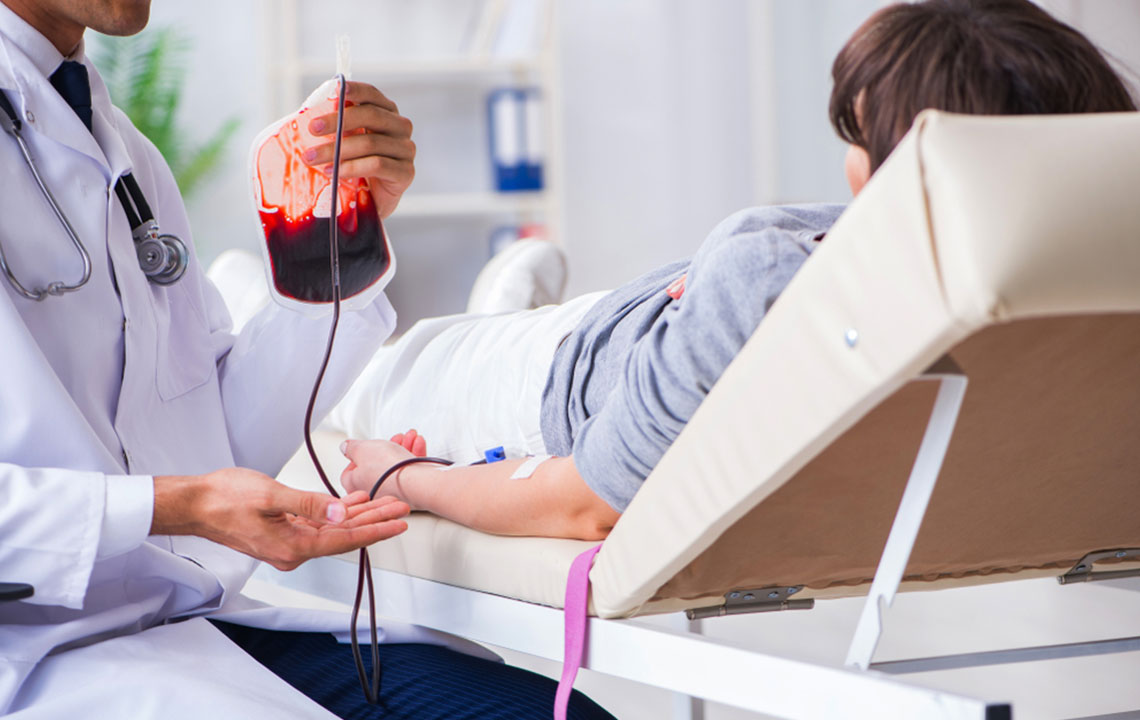An In-depth View of Symptoms, Causes, and Treatment for Deficiency Anemia
Iron deficiency anemia is one of the most common types of anemia. It is caused by a significant deficiency of iron in the human body. The iron deficiency is determined from blood tests that indicate a drop in the red blood cells. The primary function of the red blood cells is to carry oxygen to the body’s tissues. As the iron levels in the body drop, the body is unable to produce enough red blood cells for the smooth passing of oxygen to the tissues.

Symptoms
In most cases, the symptoms of deficiency anemia can be mild resulting in them not being noticed by the patient. However, as the deficiency increases, the body starts to suffer a lot more and the symptoms are stark. If you witness any of the symptoms mentioned ahead, even at small levels, you must consult a doctor about your condition.
The symptoms of iron deficiency anemia can include extreme fatigue and weakness, which can be caused due to the improper oxygen supply to the body’s tissues. As the condition worsens, there can be other symptoms that will cultivate; symptoms like, paleness in the skin, chest pain, headache, dizziness, cold hands or feet, brittle nails, and inflammation or soreness in the tongue.
In more stringent stages of the condition, the patient can also see changes in the appetite and food habits. There will be a significant drop in the appetite, especially among children and infants that are enveloped by the condition. The patient will also encounter unwarranted food cravings that could be harmful to the body. There will be an increased craving for starch, cold substances, and junk.
Causes
Along with an inability to pass oxygen to the body’s tissues, the blood also loses its red color as it is the iron that helps in producing hemoglobin – which gives the blood its red color. If there is inadequate consumption of iron, the body will see the consequences and eventually develop deficiency anemia. Some of the causes of deficiency anemia are listed below:
- Blood loss/lack of iron : These are the two most prominent reasons for you to adopt deficiency anemia. The human blood contains large amounts of red blood cells and hence, there is a lot of iron. A loss of blood can easily lead to the deficiency of iron and cause deficiency anemia. Women who have heavy periods are at a higher risk of developing deficiency anemia. Peptic ulcer, a hiatal hernia, colon polyp or colorectal cancer can be reasons for slow but gradual blood loss. An improper diet can also lead to an iron deficiency. If you do not consume enough iron regularly, your body will slowly witness a deficiency that could lead to deficiency anemia.
- Pregnancy/inability to absorb iron : During pregnancy, the body’s requirement for iron increases as the blood is also absorbed by the fetus. Women are required to include an iron supplement in their diet to meet the requirement, an inability to do so can cause iron deficiency anemia. In another condition known as the Celiac disease, the body can lose its ability to absorb the iron from foods. It can affect the intestine’s ability to absorb iron and can be a major causing factor for deficiency anemia. If any part of your small intestine has been operated then it loses the ability to absorb iron.
Diagnosis
Your doctor will run a few tests to diagnose your condition. The tests are simple and mostly involve a small blood sample.
- An irregularity in the size and color of the red blood cells is a clear sign of an iron deficiency in the body. The size of these red blood cells decreases, while there is a paleness in the color of the blood.
- A test indicating the drop in the hematocrit levels can be a clear sign of deficiency anemia. The standard levels for adults are 34.9 to 44.5 percent for women and 38.8 to 50 percent in men.
Treatment
The treatment for deficiency anemia is quite straightforward. In most cases, the doctor will recommend you to adopt iron supplements in your diet. If the cause is an underlying condition, then the doctor might recommend a few treatment techniques for that condition. To achieve efficient and quick treatment, the doctor will instruct you to do the following things:
- Consume supplements with orange juice : Your doctor will advise you to consume the iron supplements along with orange juice as the vitamin C in the juice will help absorb iron better.
- Avoid antacids and iron : Antacids are a type of medication that can hamper the iron absorption process. Thus, it is ideal for you to avoid taking antacids when you are consuming iron supplements.


